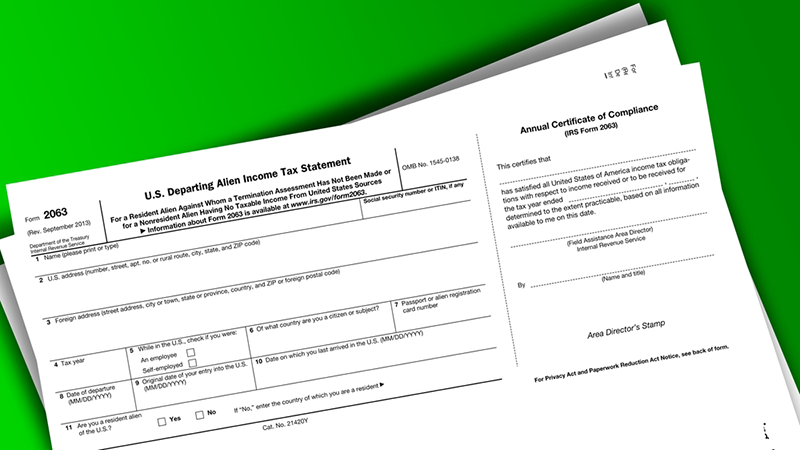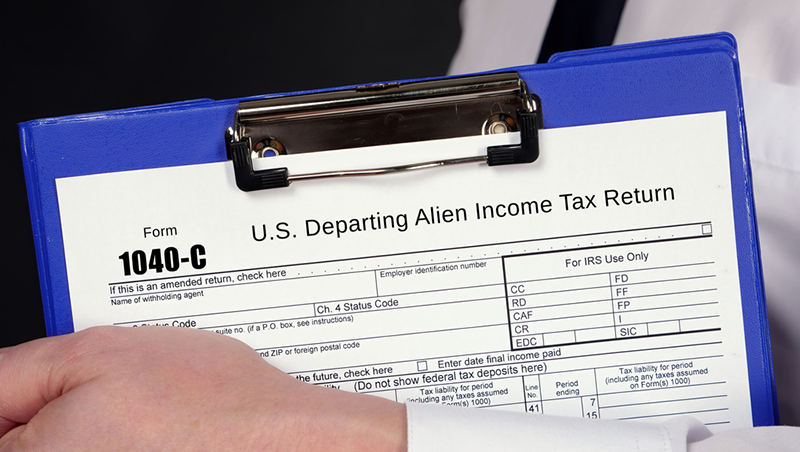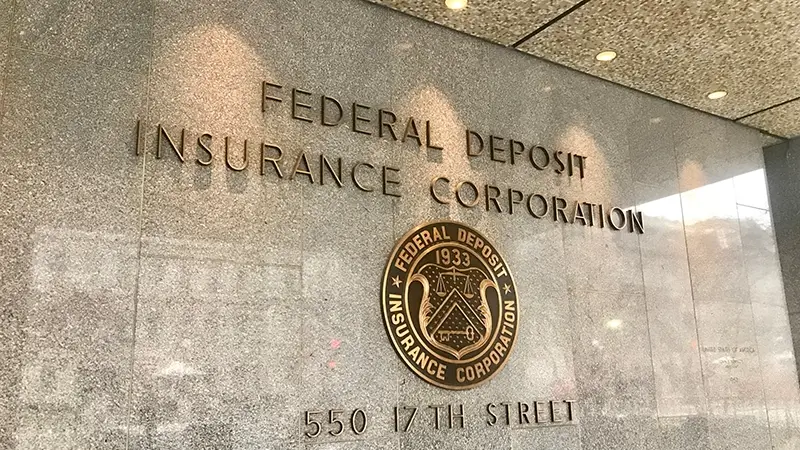The sudden and drastic collapse of Silicon Valley Bank has raised many questions about the extent to which consumers deposits are protected. The FDIC, Federal Deposit Insurance Corporation, is a government agency that provides insurance for bank deposits in the United States up to a maximum of $25,000 in the case of an insured bank failure. Despite this protection, banks can still fail if they take too much risk when making loans to customers.
Having a secure deposit account is essential for financial security. It provides peace of mind knowing that your hard earned money is safe from bank failure or fraudulent activity. The Federal Deposit Insurance Corporation (FDIC) was established in 1933 to protect consumers by insuring deposits at banks and other FDIC-insured institutions. With the FDIC's protection, depositors can rest assured that their funds are backed by the full faith and credit of the United States government.
In addition to its deposit insurance and regulatory functions, the FDIC also plays a key role in resolving failed banks. When a bank fails, the FDIC may step in as the receiver and work to liquidate the bank's assets and pay off its creditors, including insured depositors. The FDIC may also arrange for the sale of the failed bank to another financial institution, which helps to minimize disruptions to the local banking market.
In this article, we will discuss why having an FDIC-insured deposit account is important for financial security and how it works, as well as the tax implications.
What is the Federal Deposit Insurance Corporation FDIC?
The Federal Deposit Insurance Corporation (FDIC) is a United States government agency that provides insurance to depositors in case their bank fails or becomes insolvent. The FDIC was established in 1933 to promote public confidence and stability in the banking system by insuring deposits up to $250,000 per account holder at member banks. In addition to deposit insurance, the FDIC also works to maintain the stability of the banking system by monitoring and regulating member banks, and by taking corrective action when necessary. The agency is funded by assessments on insured depository institutions and from other sources such as premiums paid for deposit insurance coverage. Any losses to the Deposit Insurance Fund to support uninsured depositors will be recovered by a special assessment on banks, as required by law.
What banks are under FDIC?
The FDIC insures deposits at more than 6,200 banks and savings associations. To be eligible for FDIC deposit insurance coverage, a bank must be an FDIC-member institution and approved by the FDIC as a depository institution. Member institutions are required by state law to obtain federal deposit insurance from the FDIC in order to operate and accept insured deposits from federal agencies. The Federal Deposit Insurance Corporation offers a searchable list of banks and insured institutions on its website, which can be used to determine whether or not an institution is covered by FDIC insurance.
What is the maximum amount of coverage provided by FDIC?
The maximum coverage provided by the FDIC is $250,000 per depositor, per insured financial institution. This limit applies to all of a depositor's deposits held in all accounts combined at the same FDIC-insured institution. However, this maximum is subject to change from time to time in accordance with changes in federal law.
What happens if my bank fails?
If your bank fails and is unable to pay its depositors, the Federal Deposit Insurance Corporation will step in and insure your deposits up to the maximum limit of $250,000 per account holder. The FDIC may also arrange for the sale of the failed bank to another financial institution, which helps to minimize disruptions to the local banking market. If you have uninsured deposits that exceed the $250,000 limit, you may be eligible for partial reimbursement from the FDIC’s Deposit Insurance Fund. However, you are risking losing the amount in excess to $250,000 in the account.
Should I keep my money in an FDIC-insured bank?

Yes! It is always a good idea to make sure your money is in an FDIC-insured bank. The FDIC provides insurance up to the maximum limit of $250,000 per depositor, per insured bank and will step in to help if a member bank fails. By using an FDIC-insured institution, you can rest assured that your funds are secure. Furthermore, the FDIC also monitors and regulates member banks so that you can be confident that your money is in a safe and reliable place. FDIC insurance is an important tool for protecting your finances and providing peace of mind. Be aware, there are many financial institutions not insured by the FDIC.
Why was the FDIC created?
The Federal Deposit Insurance Corporation (FDIC) was created in 1933 as part of the Glass-Steagall Act. The FDIC was created to restore public confidence in the banking system after a period of bank failures and runs on banks caused by the stock market crash of 1929. The FDIC provided insurance for depositors up to $2,500, which was later increased to $250,000. This insurance served as a guarantee that depositors would not lose their money if their bank failed and provided them with much needed peace of mind. Since then, the FDIC has continued to provide deposit insurance for member banks and has become an integral part of the banking system. The FDIC also monitors and regulates member banks, ensuring that they are following sound banking practices. In summary, the FDIC is a United States government agency that provides insurance coverage for deposits up to $250,000 per depositor in FDIC-insured banks. The FDIC under the federal deposit insurance act also monitors and regulates member institutions, offering assurance to depositors’ funds.
Is a joint account FDIC-insured up to $500,000?
Yes, joint accounts are insured up to $500,000 per account ownership category, per depositor. This is because each account owner is separately eligible for up to the maximum coverage of $250,000. Therefore, a joint account with two owners would be eligible for up to $500,000 in total deposit insurance coverage. However, if the joint account has more than two owners, the coverage amount is subject to the Deposit Insurance Fund's per depositor maximum, per account-type category. It is important to note that each owner must meet FDIC eligibility requirements in order to qualify for additional coverage amount.
Should I keep more than 250,000 in one bank?
It is always a good idea to spread your funds out among multiple FDIC-insured institutions. Even if your total balance is less than the maximum deposit insurance limit of $250,000, spreading certain amount of your deposits across multiple banks can help you reduce the risk of all of your money being at risk should one bank fail. Additionally, having multiple accounts will give you more flexibility when it comes to managing your finances. Be sure to always check that the banks you choose are FDIC-insured before depositing any funds. This way, you can be sure that your money is safe and secure wherever it is held.
What is covered by FDIC insurance?

The FDIC provides insurance coverage for a wide range of deposit accounts held at FDIC-insured banks and savings associations, including:
-
Checking accounts
-
Savings accounts
-
Money market deposit accounts (MMDAs)
-
Certificates of deposit (CDs)
-
Negotiable Order of Withdrawal (NOW) accounts
-
Time deposits
-
Official checks and money orders issued by an insured bank
-
Interest on lawyer's trust accounts (IOLTAs)
-
Public unit deposit accounts (i.e., deposits of government entities such as school districts and municipalities)
-
Revocable trust accounts (including living trusts)
-
Irrevocable trust accounts
-
Employee benefit plan accounts
It's important to note that not all financial products offered by a bank or savings association are insured by the FDIC. For example, investments in stocks, bonds, mutual funds, and annuities are not insured by the FDIC. Additionally, safe deposit boxes are not covered by FDIC insurance.
What are 3 things not insured by FDIC?
Three things that are not insured by the FDIC include stocks, bonds, and mutual funds. These investments are not insured by the FDIC because they do not involve deposits from banks or other financial institutions. As such, investing in these instruments carries a higher degree of risk than investing in FDIC-insured accounts. Additionally, annuities, life insurance policies, and other similar products are not FDIC-insured. It is important to understand the risks associated with investing in these products before making an investment decision. Lastly, cash stored in a safe deposit box is also not FDIC-insured since banks do not have possession or control of those funds. It is important to ensure that all cash is stored in a secure, insured bank account. By being aware of these limitations, you can ensure that your money is secure and protected no matter what happens.
Here are the FDIC deposit insurance limits by year starting since 1934:

-
1934: $2,500
-
1935-1945: $5,000
-
1946-1950: $10,000
-
1951-1965: $15,000
-
1966-1969: $20,000
-
1970-1974: $40,000
-
1975-1980: $100,000
-
1981-2005: $100,000
-
2006-2010: $100,000
-
2011-2018: $250,000
-
2019-Present: $250,000 (no change)
As you can see, the FDIC deposit insurance limit has increased significantly over the years, reflecting changes in the economy and inflation. In 2008, during the financial crisis, the FDIC temporarily increased the deposit insurance limit to $250,000 from $100,000, and this increase in liability limits was later made permanent by the Dodd-Frank Wall Street Reform and Consumer Protection Act of 2010.
Will the FDIC Deposit Insurance Limit Go Up Again?
At this time, the FDIC has not announced any plans to increase the deposit insurance limit beyond $250,000. However, Congress can choose to raise the FDIC deposit insurance limit if it deems that there is a need for additional protection. Since its establishment in 1933, the FDIC's goal has been to provide financial stability and peace of mind for depositors, and it is likely that this goal will remain unchanged in the future.
For more information about FDIC deposit insurance limits and other banking industry consumer protections, visit the FDIC website at www.fdic.gov. Here you can learn more about how the FDIC helps ensure financial safety for American consumers. With their help, you can ensure that your deposits are safe and protected in the event of a bank failure.
FDIC insurance limits and ownership categories
The FDIC deposit insurance limit for each depositor at an FDIC-insured bank or other financial institution is $250,000. This limit applies to all types of deposits held in the same ownership category at the same insured financial institution. The ownership categories are Single Accounts, Certain Retirement Accounts, Joint Accounts, and Revocable Trust Accounts.
Single Accounts: A single account is a deposit owned by one individual. The FDIC insures up to $250,000 per depositor checking account in this category.
Certain Retirement Accounts: Certain types of retirement accounts such as IRAs and Keogh plans are insured separately from other deposits. The FDIC insures these accounts up to $250,000 per depositor.
Joint Accounts: Joint accounts are deposits owned by two or more individuals. The FDIC insures up to $250,000 per joint account holder at the same insured institution.
Revocable Trust Accounts: Revocable trust accounts are deposits owned by a trust with one or more beneficiaries. The FDIC insures these accounts up to $250,000 per beneficiary at the same insured institution.
It is important to understand that FDIC deposit insurance limits are based on ownership categories of money market accounts and not total deposits held by an individual depositor across multiple institutions. Therefore, if you have more than $250,000 in deposits, it is important to spread the deposits out over different banks or financial institutions and be sure to check the FDIC deposit insurance limits for each account.
Understanding how FDIC deposit insurance works is an important part of protecting your money. Just like researching an insurance policy at an insurance company, you need to know exactly what is covered by the deposit insurance. Knowing the ownership of comprehensive coverage categories and maximum coverage limits can help you make sound financial decisions and ensure that your deposits are secure.
Are Irrevocable Trust Accounts covered by FDIC insurance?
Under prior regulations, there are distinct and separate sets of rules applicable to deposits of revocable trusts and irrevocable trusts. Each set of rules has its own criteria for the coverage limits and methods by which coverage is calculated. The FDIC approved changes, on January 21, 2022, to the deposit insurance rules for revocable trust accounts, irrevocable trust accounts, and mortgage servicing accounts. For most trust depositors (those with less than $1,250,000), the FDIC expects the coverage levels to be unchanged. However, the new rule may reduce coverage for those depositors who have placed more than $1,250,000 per owner in trust deposits at one insured institution. In the new trust account category, each trust owner’s insurance limit will be determined by how many eligible beneficiaries (up to 5) are in their trust(s). ($250,000 * 5 = $1,250,000) All the rules discussed in this section are current through March 31, 2024.
Are there any other ways to get FDIC insurance?
Yes, there are a few other ways to get FDIC insurance coverage for your deposits. If you have multiple accounts at the same bank, you may be able to take advantage of “pass-through” deposit insurance. This means that each account will receive FDIC coverage up to the $250,000 limit, no matter how much money is in each account. Additionally, if you have a joint account with your spouse or another co-owner, each owner can get up to $250,000 in deposit insurance coverage. Finally, banks often offer certificates of deposits (CDs) that are FDIC-insured up to the $250,000 limit.
Employee Benefit Plan Accounts
Employee benefit plan accounts are also covered by FDIC deposit insurance. These accounts can include 401(k) and 403(b) retirement accounts, as long as they are held at a bank or other insured institution. The amount of FDIC coverage available for these accounts is the same as any other account - up to $250,000 per depositor at a bank. This means that if you have multiple retirement accounts at the same institution, each account can be eligible for up to $250,000 in FDIC coverage. It is important to keep in mind that if two people jointly own an employee benefit plan retirement account together, they must both be listed on the account and their beneficial interest must be equal in order for each owner to get up to $250,000 in coverage. Finally, if you have multiple employer-sponsored retirement accounts at different FDIC-insured institutions, each account can be eligible for up to $250,000 of deposit insurance coverage.
All deposits owned by a corporation, partnership, or unincorporated association at the same bank are combined and insured up to $250,000
Yes, all the deposits owned by the same entity in the same bank are combined and insured up to $250,000. For example, if a corporation has three separate accounts at the same bank, all of these bank accounts will be combined and insured up to $250,000 in total. It is important to note that each account must have its own unique tax identification number (TIN) - such as an employer identification number (EIN) for corporations or a Social Security number (SSN) for unincorporated associations - in order for the FDIC coverage to apply. Additionally, any deposits owned by a business or other organization at different banks must be separately insured up to $250,000 per bank.
How is a Coverdell Education Savings Account insured?
Coverdell Education Savings Accounts (ESAs) are insured separately from other non-retirement accounts up to $250,000 per beneficiary. This means that if multiple Coverdell ESAs are owned by the same beneficiary at the same bank, each account will be eligible for up to $250,000 in FDIC coverage - provided that the beneficiary is listed as the owner of each account and provides a valid government-issued ID. Additionally, if multiple beneficiaries are listed on an ESA, then each beneficiary's share of the deposit can be insured up to $250,000 - provided that all of the beneficiaries are individually listed on the account and their beneficial interests are equal.
What happens to my insurance coverage if I have deposits at two insured banks that merge?
If two FDIC-insured banks merge, the insurance coverage of your deposits will not be affected. You will still have up to $250,000 in combined coverage for all of your accounts at the surviving bank. However, if you held deposits above the FDIC standard insurance limit of $250,000 at either or both of these banks prior to the merger, you may experience a change in your coverage limit. In this case, the FDIC will transfer any excess deposits (over $250,000) from the merging banks to another insured bank and make sure that those funds are covered up to the standard insurance limit of $250,000. The FDIC will also notify you directly if this happens. It is important to note that when a bank merger occurs, the FDIC has up to one year from the date of the merger to transfer any excess deposits and ensure that coverage limits are not exceeded.
Are bank deposit losses deductible for tax purposes?
According to IRS Publication 547, a loss on deposits can occur when a bank, credit union, or other financial institution becomes insolvent or bankrupt. If you incurred this type of loss, you can choose one of a few options from the following ways to deduct the loss.
-
As a casualty loss (to the extent the loss doesn’t exceed your personal casualty gains) or
-
As a nonbusiness bad debt.
Note: You can no longer claim any miscellaneous itemized deductions, including the deduction for an ordinary loss on deposits in insolvent or bankrupt financial institutions..
Casualty loss
You can choose to deduct a loss on deposits as a casualty loss for any year in which you can reasonably estimate how much of your deposits you have lost in an insolvent or bankrupt financial institution. The choice is generally made on the return you file for that year and applies to all your losses on deposits for the year in that particular financial institution. If you treat the loss as a casualty loss, you can’t treat the same amount of the loss as a nonbusiness bad debt when it actually becomes worthless. However, you can take a nonbusiness bad debt deduction for any amount of loss that is more than the estimated amount you deducted as a casualty or ordinary loss. Once you make the choice, you can’t change it without permission from the IRS.
Casualty loss limitation
If you are an individual, casualty losses of personal-use property are deductible only if the loss is attributable to a federally declared disaster. An exception to the rule limiting the deduction for personal casualty and theft losses to federal casualty losses applies where you have personal casualty gains. Because a loss on deposits isn’t attributable to a federally declared disaster, you may deduct losses on deposits as personal casualty losses only to the extent they don’t exceed your personal casualty gains.
Nonbusiness bad debt
If you don’t choose to claim the loss as a casualty loss for purposes of offsetting gains, you must wait until the year the actual loss is determined and deduct the loss as a nonbusiness bad debt in that year.
Deducted loss recovered
It's important to note that if you receive any payments from the FDIC as a result of a bank failure, those payments may be subject to income tax. If you recover an amount you deducted as a loss in an earlier year, you may have to include the amount recovered in your income for the year of recovery. If any part of the original deduction didn’t reduce your tax in the earlier year, you don’t have to include that part of the recovery in your income.
10 tips regarding FDIC insurance:
-
Know the limits: The FDIC provides insurance coverage up to $250,000 per depositor, per insured bank. Make sure you know this limit and keep your deposits below this amount to ensure they are fully insured.
-
Verify FDIC membership: Only banks that are members of the FDIC are insured by the agency. Make sure any bank you are considering depositing your money in is an FDIC member.
-
Understand joint accounts: Joint accounts are insured separately from individual accounts, up to $250,000 per co-owner.
-
Consider retirement accounts: Retirement accounts, such as IRAs and 401(k)s, are insured separately from other deposit accounts, up to $250,000 per owner.
-
Monitor your accounts: Keep track of your account balances to ensure they remain below the FDIC insurance limit.
-
Check coverage for different types of accounts: Different types of accounts, such as savings accounts, checking accounts, and certificates of deposit, are each insured separately. Make sure you understand the coverage for each type of account.
-
Consider spreading your deposits: If you have more than $250,000 to deposit, consider spreading your deposits across multiple banks to ensure they are all fully insured.
-
Verify coverage for non-U.S. citizens: non-U.S. citizens may be eligible for FDIC insurance. Make sure you understand the coverage rules for your situation.
-
Consider additional insurance: If you have deposits that exceed the FDIC insurance limit, you may want to consider purchasing additional deposit insurance from a private insurer.
-
Stay informed: The FDIC's website provides a wealth of information on deposit insurance and banking regulations. Stay informed about any changes that may affect your coverage or your bank's regulatory status.
Summary
By understanding the FDIC insurance limits and coverage rules, you can ensure that your deposits are safe. It's important to research any bank you're considering before making a deposit and verifying their membership in the FDIC. Additionally, spreading out your deposits across multiple banks or purchasing additional insurance from private insurers may be necessary if you have more than $250,000 to protect. Lastly, it’s wise to stay up-to-date on banking regulations as these can change over time which could affect your coverage status. With these tips in mind, depositing money into an insured account should not cause worry but rather peace of mind knowing that all funds deposited will remain secure no matter what happens with the financial institution holding them.

IRS Form 2063: U.S. Departing Alien Income Tax Statement
When leaving the United States, foreign nationals may face specific tax obligations depending on their residency status and income. One of the key...

Form 1040-C: U.S. Departing Alien Income Tax Return
When foreign nationals (non-U.S. citizens) prepare to leave the United States, they must typically fulfill specific tax obligations prior to their...


 H&CO
H&CO

